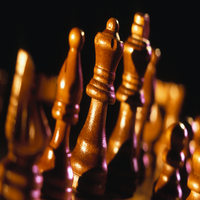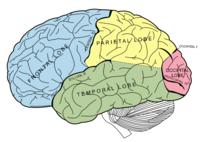Rules for Being Human

This has been around for a little while, but it well worth passing on. I have heard several different claims to the original authorship, but I think that this is the correct one. If not, please let me know!
RULES FOR BEING HUMAN
1. You will receive a body. You may like it or hate it, but it will be yours for the entire period this time around.
2. You will learn lessons. You are enrolled in a full-time informal school called life. Each day in this school you will have the opportunity to learn lessons. You may like the lessons or think them irrelevant and stupid.
3. There are no mistakes, only lessons. Growth is a process of trial and error experimentation. The “failed” experiments are as much a part of the process as the experiment that ultimately “works”.
4. A lesson is repeated until it is learned. A lesson will be presented to you in various forms until you have learned it. When you have learned it, you can then go on to the next lesson.
5. Learning lessons does not end. There is no part of life that does not contain its lessons. If you are alive there are lessons to be learned.
6. “There” is no better than “here”. When your “there” has become a “here” you will simply obtain another “there” that will, again, look better than “here”.
7. Others are merely mirrors of you. You cannot love or hate something about another person unless it reflects to you something you love or hate about yourself.
8. What you make of life is up to you. You have all the tools and resources you need. What you do with them is up to you. The choice is yours.
9. Your answers lie inside you. The answers to life’s questions lie inside you. All you need to do is look, listen, trust.
10. You will forget all this.
–Cherie Carter-Scott (American Author and Life Coach, 1949-)
Disturbances in Working Memory in Children

There is news from England about some research that indicates that many children who were thought to have low intelligence actually have a problem with working memory, the ability to hold information in your head and manipulate it mentally. It is largely genetic and if it fails to function normally it can affect long-term academic success into adulthood and prevent children from achieving their potential.
The researchers from Durham University surveyed over three thousand children in 35 schools across the UK using the first tool to enabled them to assess memory capacity in the classroom. They found that ten per cent of school children across all age ranges suffer from poor working memory seriously affecting their learning. Poor working memory is rarely identified by teachers, who often describe children with this problem as inattentive or as having lower levels of intelligence.
The new tool is a combination of a checklist and computer program created after many years of research into poor working memory in children, and it should
enable psychologists and teachers to identify and assess children’s
memory capacity as early as four years old.
The hope is that early assessment of children will enable teachers to adopt new approaches to teaching.
The checklist, called the Working Memory Rating Scale (WMRS), will enable teachers to identify children who they think may have a problem with working memory without immediately subjecting them to a test. A high score on this checklist shows that a child is likely to have working memory problems that will affect his or her academic progress.
Children can be evaluated using the computerized Automated Working Memory Assessment (AWMA). The tools also suggest ways for teachers to manage the children’s working memory loads that will minimize the chances of children failing to complete tasks. Recommendations include repetition of instructions, talking in simple short sentences and breaking down tasks into smaller chunks of information.
Pearson Assessment publishes the tools.
This is interesting work, but we still need more research to answer another question: disturbances in working memory have been identified in attention deficit/hyperactivity disorder (ADHD). So the question is whether many of the children found to have defects in working memory may actually have had ADHD.
Talking with Your Hands

In recent years there has been a small but growing literature that seems to support an idea going back to Roman times: certain specific movements may facilitate learning and a number of positive mental states.
Now, according to research from the University of Chicago that is reported in this month’s issue of Journal of Experimental Psychology: General gesturing can help children to learn new and correct mathematical problem-solving strategies. And the learning sticks: if they are taught new material later, children taught to gesture are more likely to succeed on math problems.
The investigators conducted two studies of 176 children in late third and early fourth grade, all of whom had been making mistakes in solving math problems. The children were randomly assigned the students to three groups:
- Told to gesture
- Told not to gesture
- Not told to do either
In the studies’ baseline phase, students had to solve six age appropriate math problems on a chalkboard and explain to an experimenter how they solved each one. The researchers coded the children’s videotaped efforts, analyzing gestures and utterances that conveyed problem-solving strategies.
Compared with the children who were not told to do anything, those who were told to move their hands when explaining how they had solved a problem were four times as likely to manually express correct new ways to solve problems. They still did not give the right answer, but their gestures revealed an implicit knowledge of mathematical ideas. As one example, if the problem needed for the sides to be equal, children might sweep their palm first under a problem’s left side and then under its right side. So they had implicit knowledge. Their problem was in turning explicit knowledge into correct answers. The second study showed that gesturing prepared them to benefit from subsequent instruction. Children told to gesture solved 1.5 times more problems correctly compared with the children who had been told not to gesture.
The authors conclude,
“Telling children to gesture encourages them to convey previously unexpressed, implicit ideas, which in turn makes them receptive to instruction that leads to learning.”
Gesturing appears to help children to produce new problem-solving strategies, which in turn gets them ready to learn. The authors speculate that gesturing may help kids notice aspects of the math problems that may be more easily grasped through gestural representation
The findings extend previous research that body movement not only helps people to express things they may not be able to verbally articulate, but actually to think better. At the same time, gesturing offers a potentially powerful new way to augment the teaching of math. Strategies for math problems have focused on externalizing working memory, such as writing things down in certain ways. However, children often find it hard to recall and use those strategies. Gesturing may be more accessible, and help break through the roadblock.
This makes sense: we are hardwired to learn motor actions. That was an important skill long before the first person learned the basics of arithmetic. It is quite well known in educational circles that when it comes to learning, “doing” is 2-3 times more efficient than “listening.” But even “doing” is nowhere near as good as questioning, being questioned and then teaching.
(The entire article is available for free download here.)
“He who wishes to teach us a truth should not tell it to us, but simply suggest it with a brief gesture, a gesture which starts an ideal trajectory in the air along which we glide until we find ourselves at the feet of the new.”
–José Ortega y Gasset (Spanish Philosopher, 1883-1956)
Nutrition, Learning and Memory

We have talked about the burgeoning data linking food with mood, behavior and cognition.
I have just seen a new study that really adds to our knowledge and contributes information that we can all use.
Scientists in Europe, Australia and Indonesia have published data in the American Journal of Clinical Nutrition suggesting that nutrition can improve verbal learning and memory in schoolchildren.
This study was undertaken by the NEMO study group (Nutrition Enhancement for Mental Optimization) that consists of the Unilever Food and Health Research Institute (Vlaardingen, The Netherlands); CSIRO, Human Nutrition (Adelaide, Australia) and the SEAMEO-TROPMED Regional Center for Community Nutrition, University of Indonesia (Jakarta Pusat, Indonesia).
It was a 12-month study of 780 children in Australia and Indonesia in which the researchers evaluated the effects of adding a specific vitamin and mineral mixture to a daily drink.
The study population consisted of 396 well-nourished children in Australia and 384 poorly nourished children in Indonesia. In each country, the children were randomly allocated to one of four groups, receiving a drink with either:
- A mixture of micronutrients (iron, zinc, folate and vitamins A, B-6, B-12 and C)
- Fish oil (DHA and EPA)
- Both the micronutrient mixture and the fish oil
- Nothing added, i.e. placebo
In Australia, children who received the daily drink with the added vitamin and mineral mixture performed significantly better on tests of mental performance tests than children in a control group who received the drink but without added nutrients. In Indonesia a similar trend was observed, but this time only in the girls.
After twelve months, children in Australia who received the drink with the nutrient mix showed higher blood levels of these micronutrients, which means that their bodies were taking up the nutrients. In addition, they performed significantly better on tests measuring their learning and memory capabilities compared to children in the other groups. A similar trend was observed in Indonesia, but only in the girls. The addition of fish oil to the fortified drink did not conclusively show any additional effects on cognition.
This study adds to the mounting evidence that nutrition plays an important role in cognitive development in children, even in children who are enjoying a “normal” diet. Deficiencies in iron and iodine have been linked to impaired cognitive development in young children for over a century and there is now emerging evidence that deficiencies in zinc, folate and vitamin B12 may each compromise mental development in children. More recently, fish oils (EPA, DHA) have also been linked to child cognitive development.
Most previous studies have focused on deficiencies in single nutrients in young age groups, despite the well-known observation that the brain continues to grow and develop during childhood, adolescence and early adulthood. Little is known about the role of nutrition on mental development after the age of 2. In addition very other few studies have looked at the effect of offering a mix of nutrients. Until this study, there were very few randomized controlled intervention studies assessing the impact of a multiple-micronutrient intervention on cognitive function in schoolchildren.
The investigators recommend further research to investigate the exact role of DHA and EPA in healthy school-aged children. Another research focus is the further optimization of cognitive development tests with respect to their validity and sensitivity across cultures. The scientists suggest that the smaller effects of the vitamins and minerals in Indonesia could be a result of a lower sensitivity of the cognitive tests in that country.
This research raises many interesting points:
- Is it possible that the healthy Australian diet is actually nothing of the sort?
- Is it possible that if the diet is adequate, that “super-nutrition” can help a child to exceed his or her potential?
- Are there key ages when nutrition can help, or is the effect maintained across the age range?
- Does nutritional supplementation have a long-term impact on a child?
- Have we even found the optimal mixture for child cognitive development? Might higher amounts of any nutrients – particularly fish oils – produce better effects, or might they be toxic, as we saw in the case of vitamin A supplementation?
- Are we using the correct cognitive development tests to pick up changes in different cultures? As an example, could the smaller effects of the vitamins and minerals in Indonesia be a result of a lower sensitivity of the cognitive tests in that country? Or is it that the children are also missing out on some other trace nutrients?
Many questions, but the take home message is this: careful nutritional supplementation may have considerable benefits to a child, even one growing up in an affluent culture.
“Learning is a weightless treasure you always carry easily.”
–Chinese Proverb
Mastering Chess: Genes or Environment?

It is always interesting to look at people who have excelled at something to see what we can learn.
I recently talked about the new research indiating that there are some genes that have some impact on intelligence.
There is an interesting article in today’s New York Times, entited, “Nature? Nurture? Never Mind. Here’s a Sister Act to Watch,” by Dylan Loeb McClain. He has this to say:
“Siblings who are elite chess players are rare. The best known are probably the Polgar sisters of Hungary. Susan, the eldest, is a grandmaster and former women’s world champion. Sofia is an international master. And Judit, the youngest, is the best woman player in history.
Other notable chess-playing siblings have included the Byrne brothers, Robert, a grandmaster and the longtime columnist for The New York Times, and Donald, an international master who died at 45; and Gregory Shahade, an international master, and Jennifer Shahade, a two-time United States women’s champion, who were taught chess by their father, Michael, a master.
Why so few elite sibling players? Is it simply because it is highly unlikely for a single family to produce multiple elite players? Or do most siblings have different interests?
The questions go to the heart of a familiar debate: Is chess talent innate or nurtured?
In his popular book “The Immortal Game,” David Shenk said great chess players were made, not born, writing, “Cognitive chess research punctured the longstanding myth of the chess prodigy, the born genius.”
The best players, Shenk wrote, are the product of intensive study and training. He said the Polgar sisters, who were raised by their father, Laszlo, from an early age to be chess players, were a prime example.
Shenk recounts an episode years ago in which Susan was studying with an international master and they had a problem they could not solve. They woke up young Judit, who, half-asleep, found the solution immediately and went back to bed.
Aren’t the varying levels of talent among the Polgar sisters, who all presumably had the same training, evidence of innate differences? Possibly.
A pair of sisters who have been making a big splash lately do not seem to be separated by ability, at least so far. Nadezhda and Tatiana Kosintseva of Russia are ranked No. 14 and No. 24 in the world among women. But at the European championships, which concluded April 15, Tatiana ran away from a large field, finishing two points ahead of her sister.”
There is undobtedly some set of genes that increase the chance that someone will be good at some game or other, whether it is chess or golf. But there is also the family, school or club that can help someone to realize their true potential.
But even if the genes aren’t all there, you can still become highly competent if you have learned how to learn and if you have learned the arts of patience, perseverance and persistence.
Biology is not destiny!
A Possible New Treatment for Attention Deficit Disorder

Although I am always eager to use non-pharmacological treatments whenever possible, sometimes it just isn’t possible to us them on their own. I’ve outlined some of the reasons for treating attention deficit disorder (ADD) in a previous post.
We should soon hear whether the regulatory authorities in the United States and Europe are going to approve a medicine – guanfacine – that we currently use for treating high blood pressure, for the treatment of ADD. In the United States it is currently sold under the trade name Tenex. The medicine works in the brain by modulating a population of receptors known as the central nervous system α-2 adrenergic receptors, which results in reduced sympathetic outflow leading to reduced vascular tone. Its adverse reactions include dry mouth, sedation, and constipation.
The idea of using a medicine like this for treating ADD is not new. Fifteen years ago researchers showed that receptor agonists like clonidine decreased distractibility in aged monkeys. And clonidine itself has occasionally been used for treating ADD for over twenty years.
Guanfacine seems to have some unique properties including decreasing the activity in the caudate nucleus while increasing frontal cortical activity. We would therefore expect it not only to help with ADD symptoms, but it may have some quite specific properties relating to learning new material. A key point is that if approved it will only be the second nonstimulant medicine for ADD, along with atomoxetine (Strattera). Many clinicians have had a lot of trouble with side effects of atomoxetine, particularly if it is used in adult men. So if guanfacine is approved, and if it does not have the same side effects, that would be a big bonus.
New options are always welcome, but it remains important for any new pharmacological treatment to be nested in an Integrated approach, which always includes nutrition, physical and cognitive exercises, psychological and social help, as well as attending to the subtle and spiritual aspects of the problem.
And ADD can be a very big problem, despite the protestations from people who claim that it is a non-disease dreamed up by pharmaceutical companies. Our interest is not just professional, but personal. Every single day we see what can happen if someone forgets their medicine.
If the FDA gives approval for guanfacine I shall immediately report it for you, as well as giving you details of all the safety and tolerability data.
Chiropractic Treatment in Children with Learning Disorder and Dyslexia

I spend a lot of time scanning, reading and analyzing scientific and medical journals that might have anything in them that are relevant to our themes of Health, Integrated Medicine, Meaning and Purpose.
And as I discussed recently, those that are helpful and accessible may find their way onto the “Journals” resource panel on the left-hand side of this blog. I don’t want any of us to get overwhelmed with information, so I check several issues before any of them make the final cut.
Many readers have been kind enough to make suggestion, all of which I have checked on your behalf. So I have just added a journal – Journal of Vertebral Subluxation Research – that I have only discovered in the last month or so, though I’ve now had a look at all the past issues.
There was a particular article that caught my attention. The paper suggests that chiropractic care may offer significant benefits to children suffering from learning disabilities and dyslexia.
The research was a literature review by the Swiss chiropractor Yannick Pauli, who is President of the Swiss Chiropractic Pediatric Association and who specializes in the care of children suffering from learning and behavioral disorders.
Learning disorders and dyslexia affect anywheere between three and ten percent of school-aged children in the United Sates. The numbers vary depending on the exact criteria that we use. And it is certainly true that individuals with these disorders often suffer from low self-esteem, low levels of motivation, loss of interest in school, academic difficulties and often have problems in social functioning.
Dr. Pauli suggest that any positive effects on learning disabilities and dyslexia may have something to do with improving function in the cerebellum. Most books will tell you that the cerebellum is simply involved in motor corodination, posture and balance. But that has long been known to be a limited view: amongst mammlas, humans have the largest cerebellum relative to the rest of the brain, and it is involved in coordinating not just motor functions, but also sensation, language, emotion and social functions.
According to Pauli, “The only source of constant stimulation to the brain comes from the spine and the postural muscles constantly adjusting to the force of gravity…. If the daily physical stresses of life cause misalignments in the spine — called vertebral subluxations by chiropractors — the brain is not adequately stimulated. This can cause problems throughout the body.”
This work is preliminary and skeptcs will imediately ask why it was not done by independent scholars? The answer is that they will rarely touch a topic like this unless someone has done some preliminary work to show that it might be worth their attention. This is exactly what happened a number of years ago when several friends of mine – all eminent researchers – decided to examine chiropractic manipulation in low back pain. The research was only done because some British chiropractor had already produced some pilot data. Then the full resources of a major research team swung into action.
I also have some personal observations that lead me to think that the results of this small Swiss study will have traction. Tough not everyone gets better, I have seen several children with neurodevelopmental problems and traumatic brain injuries helped greatly by chiropractic and Ayurvedic forms of manipulation. One of the most striking was a young South Indian girl whose family lived in Germany. She had a form of cerebral palsy, and at the age of 5 was in a bad way. I saw her after a dozen manipulative treatments in London, and the change was stunning.
That is why research is so important. Not just to see if a thing works, but to try and work out in whom it might work. And then to see if we can make the treatment yet better.
Dreaming and Memory
As I am writing this, one of the cats is fast asleep on my desk and clearly involved in a dream that involves running and jumping. It looks as if she’s having fun.
I’ve been fascinated by dreams and dreaming ever since I read Sigmund Freud’s The Interpretation of Dreams as a teenager. For over a century, people have speculated about a link between dreams and memory, and another book that influenced me as a youngster was called Dreaming and Memory by Stanley R. Palumbo. These books were firmly rooted in a psychoanalytic framework, and I’ve always been interested in trying to reconcile psychoanalytic and neurological views of our mental life.
So I was intrigued to see an article that just came out in Nature Neuroscience.
Almost six years ago, Matthew A. Wilson at the Massachusetts Institute of Technology (MIT), in Cambridge, Massachusetts demonstrated something very interesting. Rats formed complex memories for sequences of events that they had experienced while they were awake. These memories were replayed while they slept, perhaps reflecting the animal equivalent of dreaming.
These replayed memories were detected in the hippocampus, a region of the brain that is associated with memory. But the researchers were not able to determine whether they were accompanied by the type of sensory experience that we associate with dreams-in particular, the presence of visual imagery.
In the latest research Wilson who is professor of brain and cognitive sciences at MIT’s Picower Institute for Learning and Memory, and postdoctoral associate Daoyun Ji looked at what happens in rats’ brains when they dream about the mazes they ran while they were awake. They recorded brain activity simultaneously in the hippocampus and the visual cortex, and demonstrated that replayed memories did, in fact, contain the visual images that were present during the running experience. Neurons that are activated when the animal experiences an event while awake are reactivated during sleep.
There is another piece to this research: the regions of the cerebral cortex that processes input from the senses and the hippocampus communicate with each other during sleep, leading us to speculate that this process reinforces and consolidates memories.
As the authors write, "These results imply simultaneous reactivation of coherent memory traces in the cortex and hippocampus during sleep that may contribute to or reflect the result of the memory consolidation process."
This is of great practical importance: it strongly supports the idea that adequate sleep is necessary to consolidate memory.
When I was a child my parents taught me to read through all my schoolwork just before I went to bed, even if I was tired. Work in psychology has shown that this is often the best way of memorizing factual material, and this new research shows us why.
“Waking is long and a dream short; other than this there is no difference. Just as waking happenings seem real while awake, so do those in a dream while dreaming. In dream the mind takes on another body. In both waking and dream states thoughts, names and forms occur simultaneously.”
–Ramana Maharshi (Indian Hindu Mystic and Spiritual Teacher, 1879-1950)
“The light of consciousness passes through the film of memory and throws pictures on your brain. Because of the deficient and disordered state of your brain, what you perceive is distorted and colored by feelings of like and dislike. Make your thinking orderly and free from emotional overtones, and you will see people and things as they are, with clarity and charity.”
— Sri Nisargadatta Maharaj (Indian Spiritual Teacher and Exponent of Jnana Yoga and Advaita Doctrine, 1897-1981)
Memory Molecules
There are still a great many mysteries about memory:
- The molecules in neurons are constantly changing, as are many of the connections between cells. So how can memory be maintained for a lifetime in an environment that is in a constant state of flux?
- Why is it that you can remove large regions of the brain yet memories are not lost? Even in the late stages of Alzheimer’s disease, some long-term memories are maintained even when much of the brain is taken over by plaques and tangles.
- How much memory is there outside the brain and in the body?
- Is some memory maintained not in the brain itself but in fields associated with the body?
Gradually some questions are being answered not just by technology, but by asking new questions and bringing new types of expertise to bear on these problems.
A very interesting new study was published last week in the Journal of Neuroscience. The paper was not by neurologists, but by two mathematicians from the Brain Institute at the University of Utah. Their research suggests that memories are held in our brains because certain proteins serve as anchors, holding other proteins in place to strengthen the connections between nerve cells known as synapses. The anchors keep proteins in place, and these proteins in turn determine how strong a synapse is. And the strength of the synapse is a key to forming and retaining memories.
Synapses function by electrical activity in a neuron releasing a chemical neurotransmitter that affects another neuron or an organ.
One of the primary neurotransmitters involved in learning and memory is called glutamate, that binds to a number of receptors. But the most important for memory are the "AMPA receptors" that are embedded in the receiving ends of neurons. The AMPA receptors are held in place by special scaffolding molecules.
The mathematicians were able to make several predictions about the way in which AMPA receptors stay in place and how repeatedly learning something strengthens the connections between neurons.
The key to learning and remembering is anchoring AMPA receptors on our neurons.
I went into the technical side a bit, because this finding may help us get closer to understanding what goes wrong in Alzheimer’s disease.
It also ties in with some other research out this week in the journal Neuron. A team from the Univesity of Oxford has been trying to work out why adults may find learning more difficult than children. The young learn things more easily, but older brains stiore information more efficiently. They also focused on synapses, and seem to have found the mechanisms involved.
Young brains have many "silent" synapses that don’t do anything unless called upon to learn something. Older brains have to reuse synapses that have already been used, boosting the strength of connections with increased amounts of neurotransmitters.
So as we get older, our brains adopt different strategies for learning new material, and we should get ever better at organizing and integrating information.
That also fits with the strategies that we have used for improving people’s ability to learn and remember. We use connections as in Mind mapping, multiple sensory associations inclusing music, color and smells, and a sophisticated method for asking constant questions to see if new information fits with material that we have already asimilated.
The Seat of the Emotions and the Gateway to Reason
“If passion drives, let reason hold the reins.”
–Benjamin Franklin (American Author, Inventor and Diplomat, 1706-1790)
For many centuries reason and emotion have usually been held to be two poles of a magnet, the North and South of the psyche. Every now and then someone has proposed some other psychological lodestone, but most have finally devolved into this simple binary model.
Yet a moment’s introspection shows us that reason and emotion are inextricably linked. We know from people with alexithymia and a dizzying array of “personality disorders,” that a real-life Mr. Spock would be a hobbled creature. Yet we also know that simple binary models of pleasure and pain as the drivers or behavior are over simplified. It appears that one of the great attainments of many mammalian species – and who knows how many others – is an ability to be moved by more complex considerations of loyalty, propriety and even morality.
There is an important study in this month’s issue of the Journal of Neuroscience. The amygdala is a central processing station in the brain for emotions and is involved in laying down emotional memories. A shock or extreme pleasure may both leave their traces in the amygdala, so it plays a key role in survival.
But this new research shows that the amygdala also plays a role in working memory, a higher cognitive function that is critical for reasoning and problem solving. If you ask someone for a telephone number and you instantly dial the number and then forget it, that is working memory in action. If you choose to remember the number for later, it moves out of working memory into longer term memory stores. In some senses working “memory” is a little bit of a misnomer: it is a function that enables us to manipulate information extremely rapidly.
In two different functional magnetic resonance imaging (fMRI) studies with a total of 74 participants, individual differences in amygdala activity predicted behavioral performance on a working memory task. The experimental subjects were asked to look either at words, such as rooster, elbow, and steel, or faces of attractive men and women. Then they were asked to indicate whether or not the current word or image matched the one they saw three frames earlier. Try it for yourself, and you will see that this is quite challenging. The subjects’ brains were scanned while completing the tasks.
People with stronger amygdala responses during the working memory task also had faster response times.
This is exceptionally important for anyone interested in thinking and learning: it shows that a region of the brain thought to be involved primarily, or perhaps even exclusively, in processing emotions is also involved in higher cognition, even when there is no emotional content.
I think it most likely that the amygdala may be involved in vigilance, perhaps preparing people to better cope with challenging situations and also improving their ability to sort information according to its relevance to the current situation. This is something that people with poor resilience find hard to do, so it may be that the amygdala is involved in developing and maintaining resilience.
This study helps to prove the total inter-relatedness of emotion and cognition and supports learning strategies that are based upon integrating emotion with facts. One of the ways in which health care students are able to remember enormous numbers of facts is by attaching them to patients with whom they have worked. Emotion, interest and empathy can dramatically accelerate learning.






